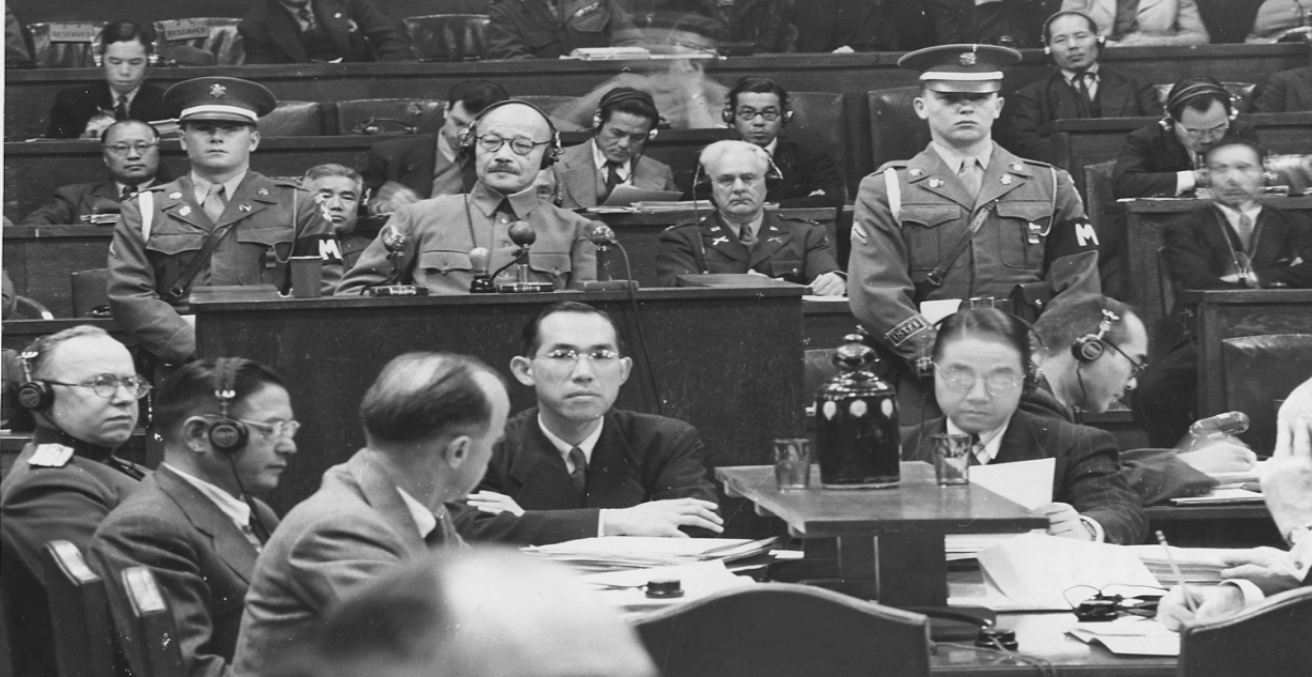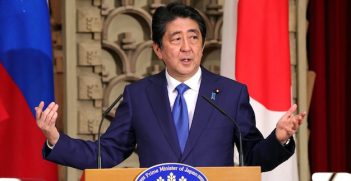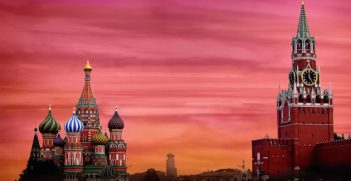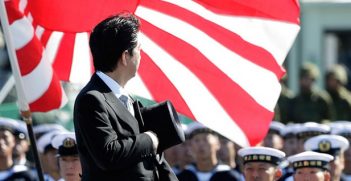Remembering the Tokyo Tribunal

When making their case against Japanese leaders, prosecutors were working against time. As the trial progressed, so too did the Cold War, turning old foes into new allies and old allies into new foes.
When the International Military Tribunal for the Far East opened in Tokyo on 3 May 1946, the Allied prosecuting powers charged all twenty-eight Japanese defendants with conspiring to commit ‘crimes against peace’. Their aim was to settle accounts for the Asia-Pacific War; and they had various not entirely estimable reasons for doing so. By focusing on Japan’s aggression, the Americans hoped to explain away the military debacle at Pearl Harbour, the Soviets wished to excuse their treaty-breaking invasion of Manchuria, and the colonial powers wanted to justify their post-war reclamation of the Asian colonies. Consequently, thirty-six of the fifty-five counts in the indictment held the accused collectively responsible for conspiring to wage aggressive wars and individually responsible for the initiation and waging of them.
When constructing their ‘crimes against peace’ case at Tokyo, the prosecutors faced all the legal difficulties experienced by their counterparts at the overlapping Nuremberg Tribunal, and more problems besides. One of the greatest challenges related to the nature of the Second World War itself. From the outset, the Allies had argued that the Axis leaders had launched a uniquely barbarous conflict, unmatched in the annals of war. This is one reason why both tribunals declared ‘crimes against peace’ to be the gravest international crime. But their emphasis on aggression inverted reality: if anything about the conflict was unique, it was not bombardments, invasions and occupations — it was the Holocaust. Herein laid the problem for the Allies at Tokyo. Compared with the German leadership, the Japanese defendants’ conduct seemed less exceptional — less of a shattering assault on the very idea of humanity — despite their responsibility for many millions of deaths, often involving war crimes, in China and elsewhere. As Judge Bruno Simma noted in 1999, ‘Auschwitz was singularly German, and none of the offences committed by the Japanese political and military leaders came even close.’
Another difficulty for the prosecution at Tokyo related not to the war just finished, but to the Cold War just beginning. The Allies had framed the ‘crimes against peace’ charges to strip out the top echelons of the Japanese leadership and to deter potential challenges to the post-war world order. The charge was therefore innovation in the service of orthodoxy: the innovation being the criminalisation of aggression and the orthodoxy being the new American-led status quo. The problem was that the wartime alliance that gave rise to this idea soon fell apart, and as the Tokyo trial progressed from 1946 to 1948, new Cold War alignments formed, with old foes becoming new allies and old allies, new foes. The Allied prosecution teams — which included both Americans and Russians — tried to prevent these shifts from undermining their case against the old enemies, the Japanese, but were unable to completely ignore this new reality.
The defence lawyers, needless to say, did their best to capitalise on the prosecution’s difficulties. Although they had been given the daunting task of defending Japanese ministers and generals who had orchestrated, or failed to prevent, assaults across Asia and the Pacific, they were nevertheless able to marshal adequate, if not always wholly persuasive, arguments against ‘crimes against peace’ charges, and even occasionally turn the tables on the prosecuting powers. First, they challenged the validity of the ‘crimes against peace’ charge itself, claiming (on strong grounds) that the charges were retroactive and selectively imposed. Second, they tried to justify Japan’s policies as self-defence, arguing that it had been compelled to act against Chinese boycotts and hostile Western powers. And finally, they played on current Cold War tensions by claiming that Japan had been pursuing an early ‘containment’ doctrine in China while trying to avoid a war with the real aggressor in the region — the Soviet Union.
The defence’s attempts to elide old and new conflicts was well-illustrated by an acrimonious exchange in April 1947 between William Webb, the Australian presiding judge, and George Lazarus, the American defence lawyer representing Field Marshal Hata Shunroku. Lazarus had argued that Japan’s actions in China were motivated by fear of the spread of communism, and he tried to enter into evidence Harry Truman’s ‘containment’ speech, delivered to Congress just the previous month, arguing that:
President Truman we feel has said exactly what these [Japanese] people have been saying all along, and we want to introduce President Truman’s address as justification … for what they themselves foresaw beginning in 1937 when the China Incident broke out.
From the bench, Webb, mindful of the Soviet judge I. M. Zaryanov, declared that he would not put up with ‘slurs’ against a member of his court, and warned: “As American counsel, do not take advantage of the great tolerance displayed by this Allied Court to indulge in what might be termed enemy [i.e. Japanese] propaganda.” Lazarus, unbowed, retorted: “we never expected that evidence of the remarks by the President of the United States to the Congress of the United States would be called enemy propaganda.”
Although this sort of argument failed to persuade the majority of the judges, the defence had some success with its criticisms of the legal validity of the concept of ‘crimes against peace’. Several dissenting judges took issue with the charge, and after the sentences were handed down in November 1948, other jurists — including those advising the prosecuting powers — tacitly followed suit. Just months after the sentences were carried out, the Allied-run Far Eastern Commission announced that no more trials would be convened to try the Japanese, and with this decision the door shut firmly on the ‘crimes against peace’ charge.
It is only now, some seven decades later, has this thorny issue has been raised again, with the decision to activate the ‘crime of aggression’ charge at the International Criminal Court. The circumstances may have changed, but if past experience is anything to go by, the portents are not good.
Dr Kirsten Sellars is Visiting Fellow at the Coral Bell School of Asia Pacific Affairs, Australian National University. She is author of ‘Crimes against Peace’ and International Law’ (2015) and the edited volume, ‘Trials for International Crimes in Asia’ (2015). Her research focuses on international criminal law, the law governing uses of force and the law of the sea, with particular emphasis on Asian perspectives.
Kirsten will be presenting a seminar with other experts on ‘The Tokyo Tribunal: 70th Anniversary of the Judgment on Japan’s War Leaders‘ to be held at China in the World Building, ANU, on 24 September 2018.
This article is published under a Creative Commons Licence and may be republished with attribution.





